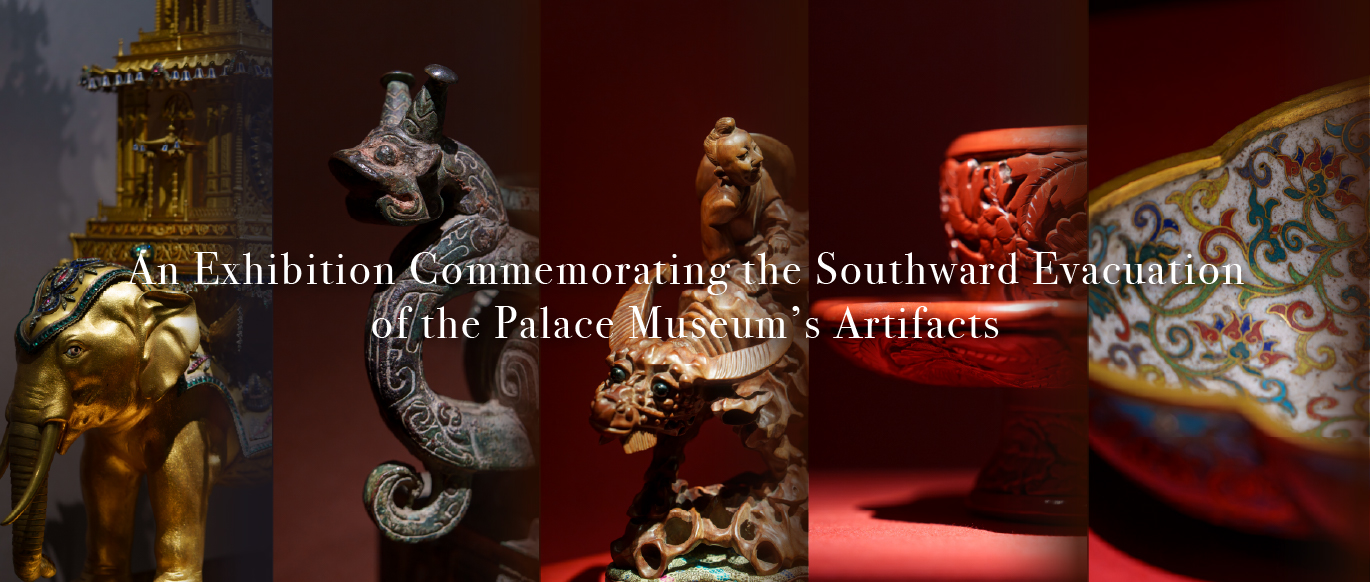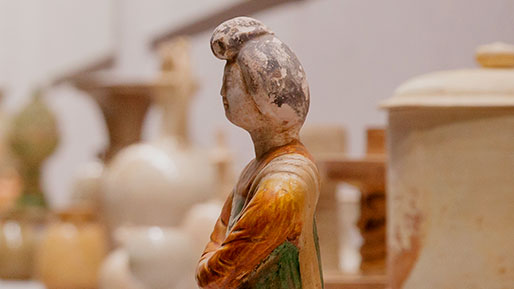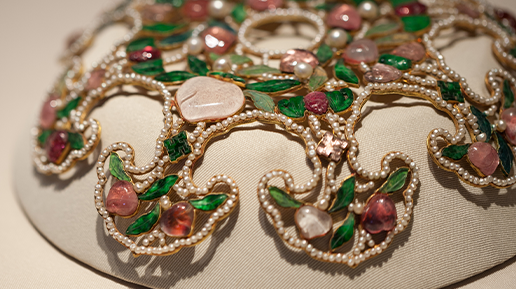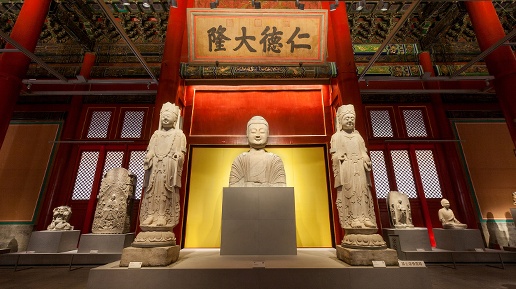Admission: Free with purchase of general admission ticket
*May be subject to closure on Mondays (except national holidays)
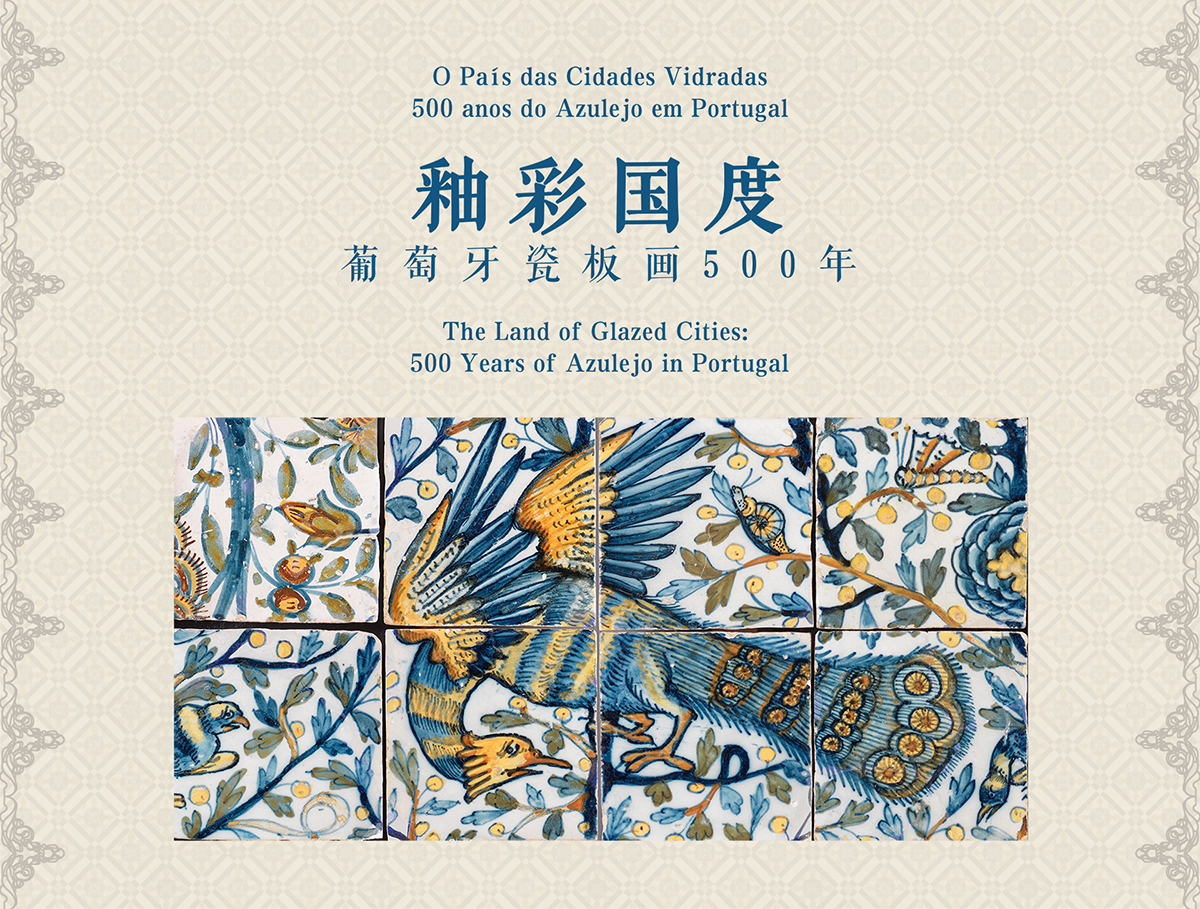
As the first jointly organized exhibition by the Palace Museum and Museu Nacional do Azulejo, the cooperative effort will showcase over fifty of the most exquisite works of Portuguese azulejo (a form of painted tilework) from the sixteenth to twenty-first centuries. Since each work comprises many individual tiles, the total number of tiles to be displayed is approximately 5,000.
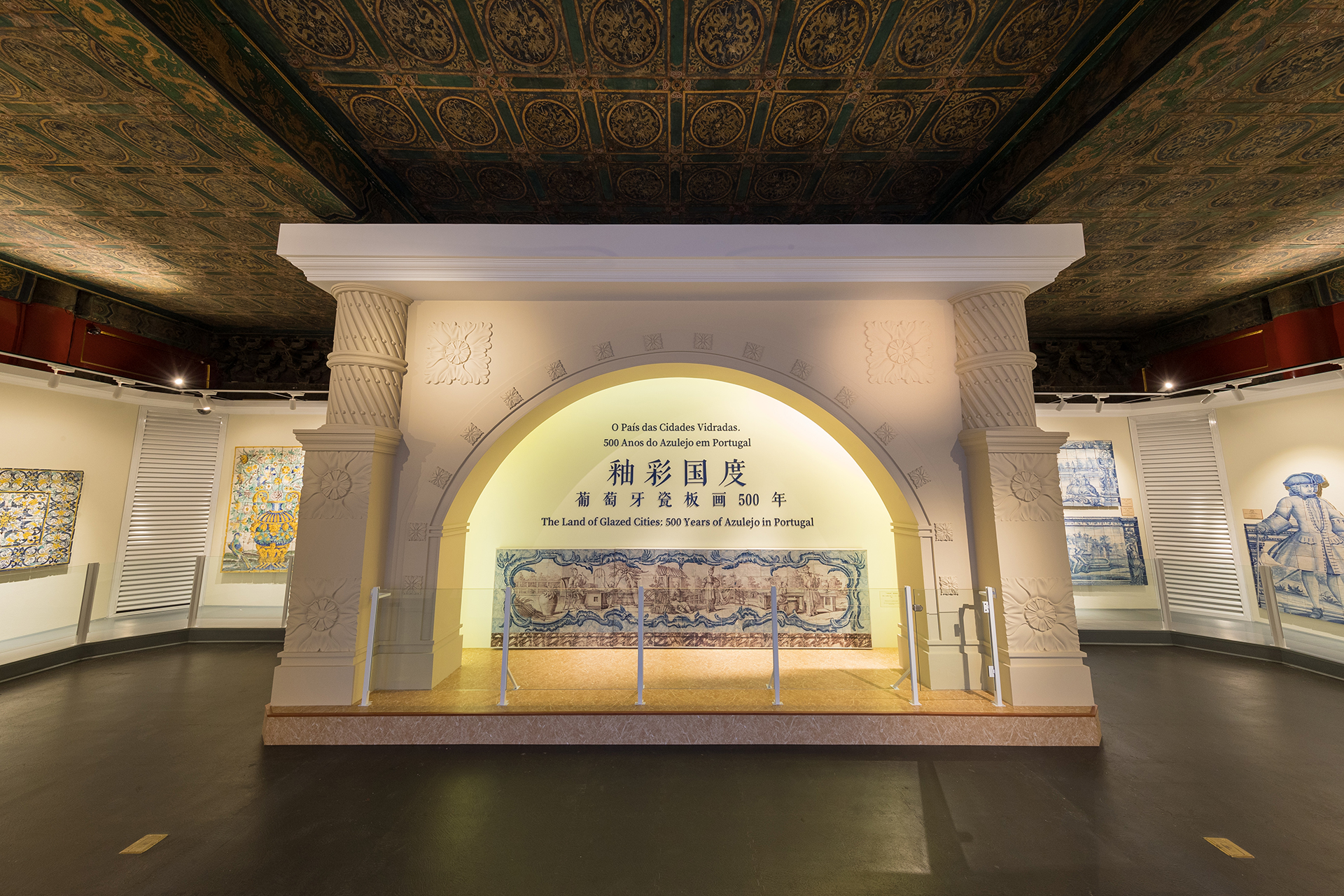
Boasting a long history of azulejo production with unique regional features, Portugal is known as the “Kingdom of Azulejo.” The art of Portuguese azulejo exemplifies the nation’s history and culture with its integration of various elements of Eastern and Western cultures. As pioneers of the great age of maritime exploration, the Portuguese were some of the earliest Europeans to have contact with China. Cultural exchange between the two countries has never ceased since trade relations were first developed. After dissemination to Europe, the techniques and aesthetics of Chinese ceramics had a profound impact on Portuguese azulejo. The eighteenth century, in particular, witnessed an unprecedented rise in the popularity of Chinoiserie (Zhongguo feng) in azulejo production as blue and white designs and Chinese themes became fashionable. Many works of Portuguese azulejo have the simple elegance of Chinese blue and white ceramics blended with salient features of Western culture. The development of the artform may be considered a harmony of East and West and a product of the exchange along the maritime routes of the Silk Road.
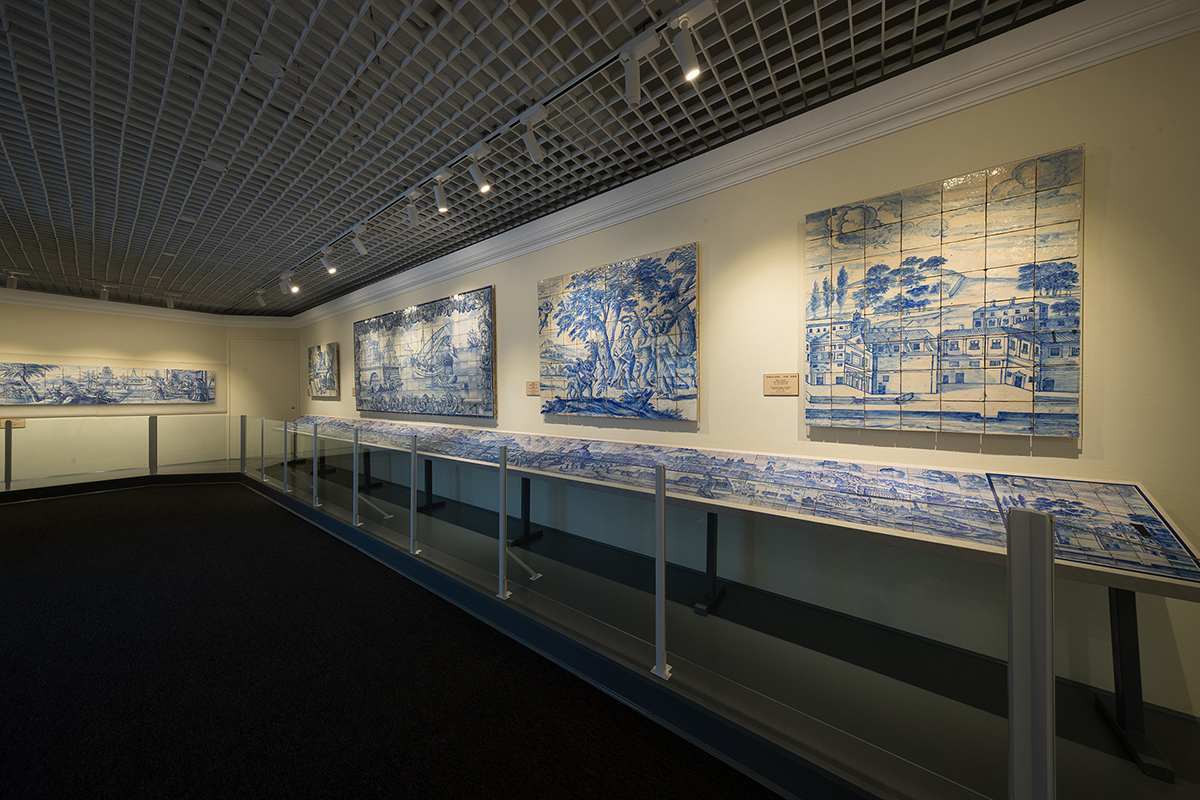
The art displayed in this exhibition embodies over 500 years of the history of Portuguese azulejo with works from various periods showing the evolution of styles. As the quintessence of the artform, the selected works may be considered colorful examples of artistic perfection. Exhibited without the commonly seen protection of glass cases or other barriers, the visual beauty of the art may be enjoyed directly. Some of works include compositions of sixteenth century azulejo, which is detailed and highly decorative with a combination of Christian and Islamic artistic features. Hunting scenes of seventeenth century azulejo show vivid figures in bucolic settings accomplished with a harmonious blend of brilliant colors. One of the eighteenth century azulejos presents a Portuguese artisan’s vision of Chinese life with tranquil scenes of a woman holding a child on her knee, a husband and wife diligently working in the home, and a mother playing a flute while frolicking with her daughter. In the nineteenth century, the Industrial Revolution brought immense changes to artistic styles, and in the twentieth and twenty-first centuries, Portuguese azulejo was made under the influence of new artistic trends with the abstraction, exaggeration, and alteration of styles to express the creator’s inner thoughts. Nevertheless, Portuguese azulejo has maintained its practical and artistic value as its use in décor has never been abandoned; on the contrary, in adapting to contemporary aesthetics, the artform is imbued with new life.
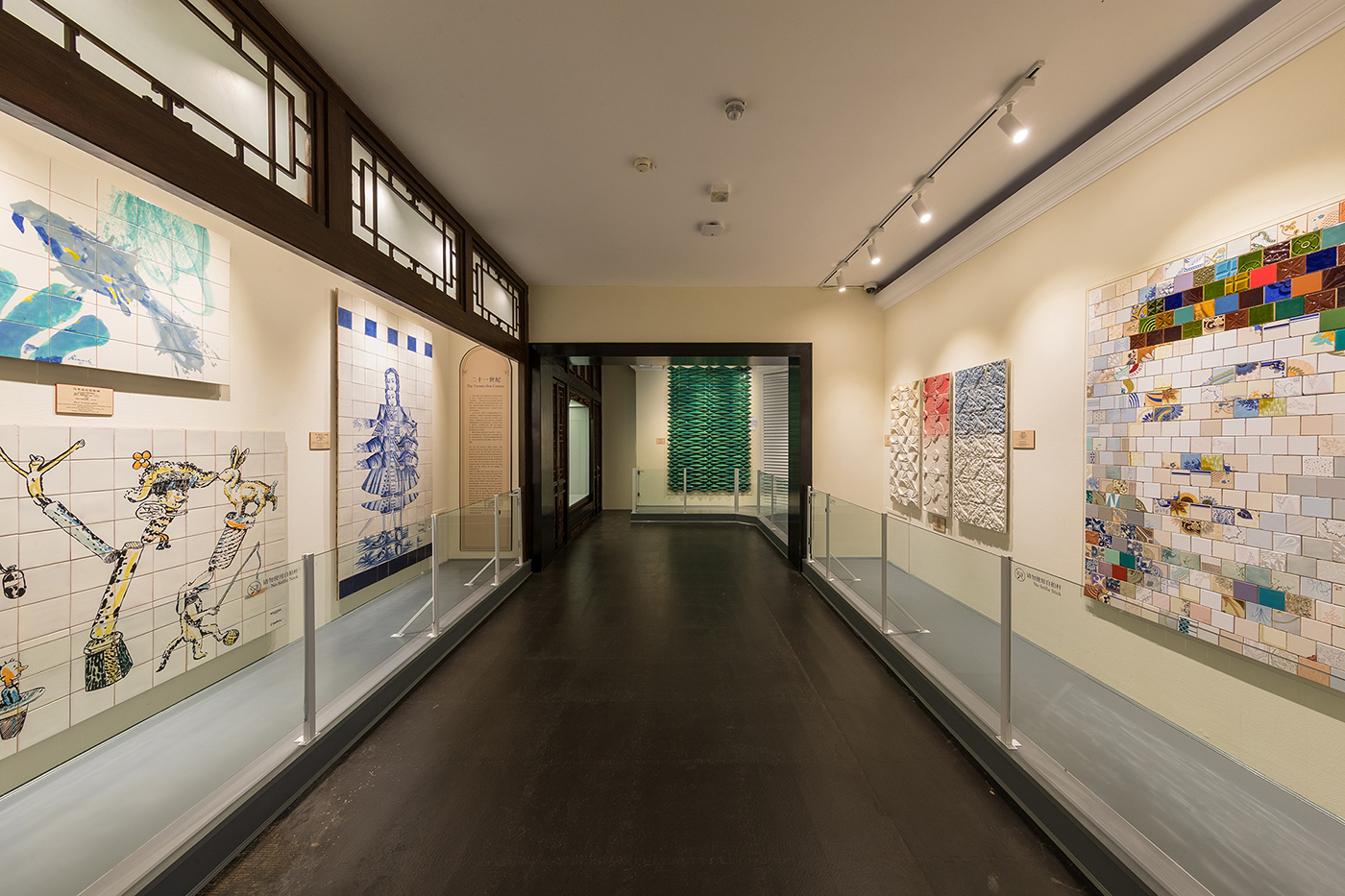
The exhibition will be held in the Palace of Eternal Longevity (Yongshou gong), which is one of the renowned Six Western Palaces located behind the Hall of Mental Cultivation (Yangxin dian). The courtyard’s two flowering crabapple trees (haitang shu) have endured for over a hundred years since their planting during the Qing dynasty (1644–1911). The unique position of the exhibition “The Land of the Glazed Cities” among the sculpted beams and painted columns of China’s traditional palatial architecture is rich with cultural symbolism. The Palace Museum’s curators have designed the gallery after the architectural design of the Mosteiro dos Jerónimos in Lisbon and the colors of the city’s buildings and streets. While appreciating the beautiful works of Portuguese azulejo, visitors will seemingly enter the romantic setting of Lisbon’s narrow stone-paved byways while listening to the melodies of Fado and return to the glorious days of the maritime empire of Portugal.

Translated and edited by Adam J. Ensign and Zhuang Ying





